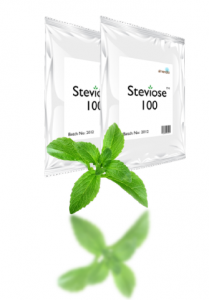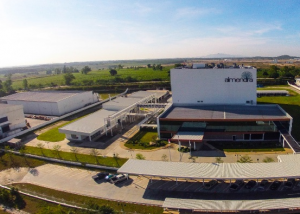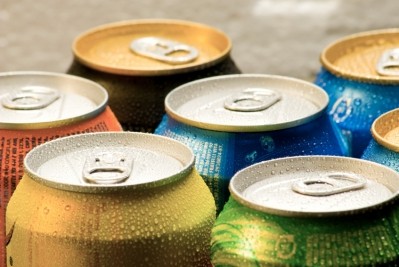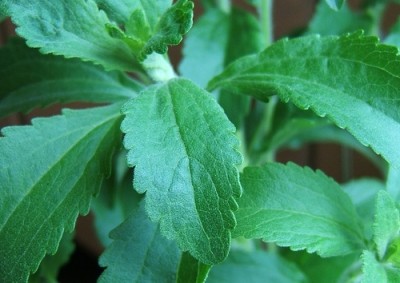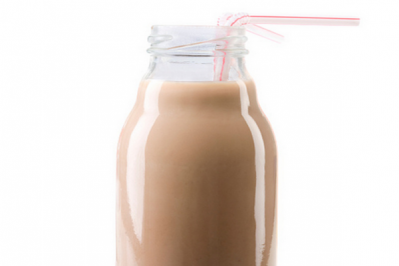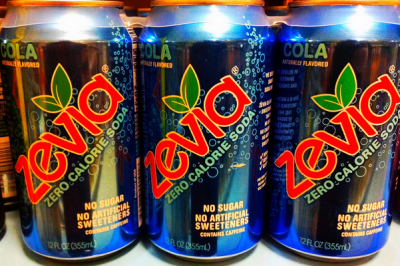SPECIAL EDITION 2014, BEVERAGE SWEETENER INNOVATION
‘Europe’s been particularly victimised by poor quality stevia, but that’s changing!’: Almendra

The company commercialized its new plant in Thailand (pictured below) in October 2013, and gained GFSI certification in September 2014.
Katherine Oglesby, commercial director, Almendra, told BeverageDaily.com that the site can produce minimum purity 99.5% Reb A (its Steviose 100 product) on a megaton basis with “absolute clockwork precision”.
Oglesby, who has worked across the ingredients and flavour industry, and spent 20 years with Coke in product R&D, agrees that there have been quality issues in the stevia marketplace.
Quality issues in the stevia marketplace
“Traditionally the stevia industry has been almost famous for never producing the same product two times,” she says.
“It’s still a very valid criticism of some of the companies that are in the market at varying levels. In reality when you look at the stevia market, there aren’t actually that many companies that actually purify the ingredient themselves.
“There are a lot of people sort of in the middle of the supply chain in the stevia industry, and a lot of people who are reselling product – brokers,” Oglesby adds.
"There are very large ingredient companies, even major stevia players, that don’t manufacture any stevia themselves – their product is made by a third party. Very few companies in the industry self-manufacture – Almendra is one of them,” Oglesby says, adding that this helps the company benefit from economies of scale.
'Europe is very wary this time round!'
While not pointing the finger at any particular rival, Oglesby claims that Europe has been plagued by poor quality stevia in the past – products that either tasted bad or didn’t dissolve; the company claims that Steviose 100 maintains its cold water solubility throughout its three-year shelf life.
“Europe is very wary this time round – they’re really looking for a better quality product, and we’ve had a wonderful response from our initiative in Europe,” she says.
This initiative rests on Almendra’s focus on the main stevol glycoside Rebaudioside A, alone, which the company pitches as a premium ingredient for application where clean taste, quick onset and very little lingering are important – especially in sensitive applications like flavored water or liquid dairy products.
Oglesby claims that Steviose 100’s taste profile is so clean that it outperforms notable blends of Reb A with minor steviol glycosides – Reb A with Reb B, Reb A with Reb D, even Reb A,B and D.
“We turned the light on in the room and everyone could see the big white elephant…the dialogue changed – it’s very unusual in the stevia industry that a company is so transparent with the taste performance of their product,” (Katherine Oglesby, commercial director, Almendra)
On grounds of commercial viability she says she doubts that such glycoside blends can ever come to market in a cost effective way – given the cost of isolating the molecules in question, which only occur at low levels in the stevia leaf.
After Almendra published a white paper this spring on our sister site FoodNavigator.com, 'The Future is Now When It Comes to Superior Stevia', comparing Steviose 100s taste performance with the rival blends (via tests undertaken by an independent lab), Oglesby claims the prevailing narrative – with Reb A cast as a crude, first generation stevia with a bitter taste profile – changed completely.
“We turned the light on in the room and everyone could see the big white elephant…the dialogue changed – it’s very unusual in the stevia industry that a company is so transparent with the taste performance of their product,” she says.
Why not go it alone with Reb A?
So why do some in the industry say that Reb A-based stevia alone won’t do, or that you have to blend stevia with everything from erythritol to monk fruit or baobab to perfect the taste profile?
“Part of it is this history of bad tasting stevia – either not very pure, not purified correctly,” Oglesby says. “It’s one thing what you have in there, but it’s another thing what you don’t have in there – in terms of how taste quality goes.
That’s why Steviose 100 at 99.5% purity is so much better than other products at 99% – it’s not because of that 0.5% addition of Reb A, it’s because of what’s not in the product,” she adds.
Another issue is governance, she says, since a prominent paper on stevia in 2012 concluded that lead compound Reb A is not bitter at concentrations below 220ppm. Q.E.D – some formulators still believe that if they can’t use more than 220ppm, they have to blend stevia with something else.
“But everyone know our taste and smell sensitivity differs – the taste receptors on our tongues are as unique as our fingerprints – so the 220ppm guideline is kind of silly,” Oglesby says.
In addition to Steviose 100, Almendra has developed what Oglesby calls “our workhorse product”, which is less expensive and allows moderate sugar reduction – 30% in a soda, say, or a 50% juice cut in a Trop 50-style juice.
Despite containing only 80% Reb A, Oglesby claims the product outperforms most Reb A 97s – due to Almendra’s brand new process technology – and promises data next spring to prove it.
'They saw imitation is the sincerest form of flattery...'
“They say that imitation is the sincerest form of flattery,” Oglesby says. “So, this notion that you don’t necessarily need high Reb A to work very well in most applications has formed the basis of communications in Cargill’s launch of Viatech and Tate & Lyle’s launch of Tasteva.”
“Essentially they are saying, ‘We have a product that is not Reb A 97’ – it’s a good workhorse product that they can sell more cost effectively than a very high-purity product,” she adds.
Oglesby says Almendra expects to significantly increase its customer portfolio in 2015 and says that, to date, its business development reflects that of the wider stevia market – with wins in beverage, dairy and dietary supplements across multiple geographies.
“The US is certainly still the most prominent market for volume and new product development; Europe is close behind – the lead market is UK, then France. We see huge interest developing all over Europe, including in Eastern Europe,” she says.
While the beverage industry is always abuzz with the ‘next big thing’ in sweetener science, Oglesby says her ‘next big thing’ is the mainstreaming of stevia – it has cleared the necessary regulatory hurdles, is now in mainstream sodas such as Coca-Cola Life and Pepsi True, and is urgently needed to tackle endemic diabetes and obesity.
And casting an eye to the future, Oglesby believes we’ll see 100% stevia-sweetened products, when it isn’t mixed with anything, or is even used to create zero-calorie drinks.
“A product that tastes as good as a 100% aspartame product – yes, that’s coming!” she adds.
